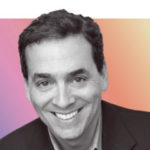 When Deepak Chopra took the stage — with an unruffled air and his signature Nehru jacket — at Meeting Professionals International’s World Education Congress (MPI WEC) this past August in Minneapolis, he drily noted that he had only 26 minutes to impart a string of ideas on “Environment as an Extension of the Body”: social and financial well-being, limbic resonance, and how the environment can affect chronic disease and overall health. “Think of your body as a verb, not a noun,” he said, as some planners in the audience jotted down notes and others simply listened.
When Deepak Chopra took the stage — with an unruffled air and his signature Nehru jacket — at Meeting Professionals International’s World Education Congress (MPI WEC) this past August in Minneapolis, he drily noted that he had only 26 minutes to impart a string of ideas on “Environment as an Extension of the Body”: social and financial well-being, limbic resonance, and how the environment can affect chronic disease and overall health. “Think of your body as a verb, not a noun,” he said, as some planners in the audience jotted down notes and others simply listened.
If they thought Chopra — a renowned alternative medicine advocate, physician, and writer — was going to be speaking in the abstract, they were in for a surprise. What he talked about was concretely bound to meetings — more specifically, healthy meeting spaces, the focus of his latest venture. Through a partnership with MGM Resorts International, via another company called Delos Living, Chopra had collaborated on a suite of “wellness” meeting spaces aptly named Stay Well Meetings rooms.
“I think meetings give us a unique opportunity to express our full potential,” Chopra told the audience. “You should feel refreshed after a meeting if you set the right tone.”
It may have been only a matter of time before a property would superimpose the wellness principles behind hypoallergenic hotel guest rooms onto meeting spaces. MGM’s Stay Well Meetings rooms, Chopra explained, utilize virtual biophilic and circadian light — which emulates the natural progression of daylight — to relax or energize Stay Well attendees, who also breathe filtered air, drink from hydration stations, and even eat foods from menus created by researchers at the Cleveland Clinic. The invisible design touches also extend to the room’s surfaces, which are treated with a self-cleaning, photocatalytic coating that triggers oxidation when exposed to light, eliminating odors and volatile compounds.
Stay Well Meetings rooms were a mashup of “technology, space, and process,” Chopra said. Many people in the audience at MPI probably had never seen anything like it.
For a few years now, planners have been incorporating elements of healthier meetings — mental and physical breaks, wholesome foods, less rigorous scheduling — into a growing number of their events. Yet MGM’s investment in Stay Well Meetings speaks to both a sustainability and a financial opportunity when it comes to wellness at meetings. “When the opportunity presented itself to participate in Stay Well Meetings, specifically, I was very excited to become involved,” Chopra told Convene via email. “Our time is so limited, and creating healthier spaces where people can come together in more productive and efficient ways is very important.”

ROOTS OF THE RELATIONSHIP
The partnership between Chopra and a casino-based entity such as MGM might seem incongruous, until you trace the connections between the players. Michael Dominguez, senior vice president of corporate sales for MGM Resorts International, was also this year’s outgoing chairman of the MPI Board of Directors — and MPI provided the stage for Chopra’s announcement. And in 2013, the MGM Grand partnered with Delos Living, a “wellness real-estate” firm based in New York, on its first wellness guest rooms; now Delos has provided the thinking and research behind the Stay Well Meetings rooms.
Chopra was introduced to Delos Living co-founder Paul Scialla five years ago through mutual acquaintances. Over breakfast, Chopra agreed to become an adviser to Delos, which was in the midst of designing living spaces full of circadian lighting, filtered and aromatized air, infused shower and drinking water, posture-supportive flooring, and non-toxic surfaces.
Delos is no small shakes. Its advisory board includes not only Chopra but also Nicholas LaRusso, the medical director of the Mayo Clinic Center for Innovation, and former U.S. Rep. Richard Gephardt. In 2013, Scialla and his twin brother, Peter, left their jobs as partners at Goldman Sachs Group to run Delos full time. Later that year, Delos opened its first apartment building in New York City’s Greenwich Village. (Chopra purchased one of those units earlier this year, and Paul Scialla occupies one as well — where he wakes himself up each morning with cool lighting panels in lieu of coffee.)
StayWell Meetings rooms, unveiled in August 2014, feature circadian lighting and purified air.
With Delos as a partner, MGM Resorts rolled out 42 Stay Well guest rooms at its MGM Grand property in Las Vegas two years ago, with elements that echo the Delos apartments: purified air, vitamin-C-infused shower water, non-toxic surfaces, and light therapy. Demand for the rooms built so swiftly that the hotel soon converted an entire floor to the Stay Well model, and a year ago began planning to introduce those elements to meetings.
“The biggest spaces we have in the hotel are our meeting spaces,” Dominguez said. “So the idea was, how do we transpose these ideas into the meeting space? In all the talk about sustainability, we sometimes forget about the people. This is an extension of the LEED concept.”
The meeting rooms were unveiled on Aug. 18, but so far have only been put to use by a handful of people. “We are selecting small groups that are [already] in-house,” said Gregg Herning, MGM Grand’s vice president of hotel sales, “and delivering various samplings of the Stay Well concept so that we can perfect the experience.”
On the surface, Stay Well Meetings rooms might seem like the vanguard of meeting spaces — though they draw on some basic principles of sensory-aware meetings. To find out if and how some of these concepts might be exportable to other, less-controlled settings, we caught up with a few experts.
BRAIN FOOD
Planners are exposed to an ever-shifting body of knowledge about food and diet, whether it’s what dishes might keep attendees alert or how to cater to gluten-free and vegan attendees. For Stay Well Meetings, Delos worked with the Cleveland Clinic to design menus based on both nutritional content and color — dishes such as blueberry-macha smoothies, grilled chicken wrapped in lavash with fattoush salad and sumac, and charcuterie.
“It [the food] wasn’t just farm-to-table; it was smaller plates, more choices, and fresher foods,“ said Fran Brasseux, executive vice president of Hospitality Sales & Marketing Association International (HSMAI) and executive director of the HSMAI Foundation. Brasseux’s group used a Stay Well Meetings room — one of the first to do so — for a strategic-planning meeting. “For a group of hoteliers who have been around and seen a lot, to a one we were all very impressed. There were beautiful little salad dishes, four choices of salads, four choices of fresh fruit.”
Planners who lack the access or budget for doctor-vetted gourmet meals and snacks needn’t despair, according to Katherine Bishop, a nutrition policy associate with the Center for Science in the Public Interest (CSPI). Bishop collaborated with the National Alliance for Nutrition and Activity (NANA) on a “Healthy Meeting Toolkit” designed to expose planners to fresh ideas for healthy eating and physical activity during a meeting. “We really saw meetings as an area where a lot more attention needs to be paid,” Bishop said, speaking not just from an academic standpoint. “We [the CSPI staff] go to a lot of meetings where the food is not healthy, and we’re still seeing a lot of sedentary time. Unfortunately, we also see this with health [medical] meetings. Some of them don’t always practice what they preach.”
The 32-page toolkit covers four areas: nutrition, physical activity, tobacco-free environments, and sustainability. When it comes to food, NANA advocates for some common-sense practices: Water as the default meeting beverage. Fruit or vegetables at every snack or meal. Grilled and baked instead of fried foods. Whole grains and healthy condiments. (Though it’s not in the toolkit, Bishop is also a fan of fruit-infused jugs of water and snack cups filled with veggies and hummus “that are easy to carry around.”) Planners can also utilize something as simple as smaller serving utensils for less-healthy dishes. “That means that people are more likely to take less of those foods,” Bishop said.
If all you eat is white flour and sugar, within a half-hour, you’ll have a rush from blood sugar rising.
Andrea Sullivan, founder of BrainStrength Systems and a consultant to meeting planners, has long been beating the drum on the importance of wholesome foods. “In meetings, food has a tremendous short-term effect. If all you eat is white flour and sugar, within a half-hour, you’ll have a rush from blood sugar rising,” Sullivan said. The main obstacle to changing that? “Budget, budget, budget. It’s cheaper to offer carbs than offer protein. Yet lean protein is absolutely necessary for people to be awake and alert.”
RARIFIED AIR
The Stay Well Meetings spaces are awash in purified air, as well as a citrus aroma that’s piped in hourly. For Stephani Robson, a senior lecturer in the Cornell School of Hospitality who has studied the psychology of hospitality spaces, aromatic meeting spaces debuting in Las Vegas somehow makes sense. “It’s not surprising that MGM is putting these things into place,” she said. “It’s well-known that by pumping a huge amount of oxygen into a space, you can keep more people alert.”
Indeed, casinos pipe oxygen into their public spaces to keep gamers alert. Other retail and hospitality sectors have experimented with altering behavior through the uses of aroma — citrus scents wafting into a mall can spur consumers to purchase more, for instance, while lavender smells drifting through a restaurant encourage lingering. Yet the meetings industry is relatively devoid of such dedicated studies in aroma, and researchers such as Robson think the Stay Well Meetings experience might lend itself as the perfect lab for testing those ideas empirically (see above sidebar). “I don’t know that I buy the scent thing,” Robson said. “But there are a lot of [covert] things that people don’t realize” influence behavior.
Case in point: Brasseux said that the HSMAI meeting at MGM “felt good,” but for slightly ineffable reasons. “The rooms felt cleaner and fresher, the lighting made it a little easier to read,” Brasseux said. “They had a different feel, but it was subtle. There was the fragrance of almost walking into a spa, but also other sensory perceptions. It triggered something in the brain, opened your mind for discussion, and relaxed you to break down barriers.”
Changing light hues, or chromatherapy, are also at the heart of the Stay Well Meetings spaces, where light is meant to energize or relax attendees. “Light is medicine. The right use of blue light can boost cortisol and reduce melatonin, and increase mental acuity,” Paul Scialla told Convene during WEC. A robust body of research has demonstrated that cool hues energize viewers, while warm tones can induce relaxation — although the Stay Well team is still drilling down on ideal setups. “In an optimal situation, the lighting in the meeting room will change subtly throughout the day to replicate natural lighting provided by the sun as it moves through the sky,” MGM’s Herning said. “This variant lighting helps our bodies fight fatigue and remain energized. We are still fine-tuning the lighting in the rooms and offering the necessary training to our team.”

For Sullivan — who co-authored the white paper “Audiovisual Technologies and Adult Learning in Meetings” with PSAV Presentation Services — the focus on lighting is a vital but sometimes neglected one. “Everything we experience, we experience through our senses and our brain. Audio and visual inputs are very, very important,” she said, “because vision and hearing are two major senses. Depending on what the light is doing, we’re actually in different moods. Different colors have different effects.”
It’s also easy to forget one of the hallmark elements of a successful learning experience, according to Robson: the absence of disruptive noise. “Let’s say you’re sitting in a meeting, and the ventilation system is noisy,” she said. “That draws away attention even briefly from the presentation. It takes quite a bit of cognitive effort to get back on track.” For her, much of the “atmospheric manipulations” inside Stay Well Meetings spaces seem like efforts to “remove things that distract physically and emotionally, so [participants] can focus on the presentation.”
REST AND RELAXATION
When asked by Convene if he’s ever found himself in a particularly draining meeting, Chopra responded: “Feeling alert, happy, and rejuvenated is a state of being.” However, he still cites a bugaboo that haunts both planners and attendees: “Meetings often run over their allotted time, and planners do not build in the proper mental breaks needed to rest the mind and body. Multitasking is ineffective, and the more you try to do, the less productive you tend to be. We are not biologically programmed to sit in a meeting for two hours without a break.”
Part of the Stay Well program focuses on guided meditations and “digital detoxes,” as well as brain teasers. The NANA toolkit echoes that sentiment, suggesting that planners let attendees know verbally that they can move freely within a space, and recommends weaving in short physical breaks — even implementing walking meetings. Sullivan is a proponent of physical activity just after lunch, when attendees are sluggish from digesting their meals. “After lunch is known to be a difficult time,” she said — a perfect time for a walk or other quiet exercise, because when people sit for a long time, their brains shut down. Exercise helps digestion and brings oxygen to the brain, improving alertness. “People should really focus on what each specific audience actually needs and prioritize it,” Sullivan added.
Another aid to optimal brain function that can be hard to come by during hectic meetings is, of course, sleep. “Planners typically overschedule, because they want to put in a lot of content. In back-to-back sessions, our brains do not have time to digest. Eventually, we can’t take in any more, and it’s tiring,” Sullivan said. “During meetings, it’s really important [to keep in mind] that people are going to go out at night; they’re entertaining clients or meeting customers. That’s where informal connections are made. So I would not schedule breakfast at 7 a.m.”
Even before the first meeting was booked for Stay Well’s space, MGM Grand was planning to roll out the concept at a few more of its 19 other properties — though they have not said which ones. Herning told Convene that a few other “hospitality brands” have also reached out to MGM to learn about the venture. “At the moment, we have additional hotel partners in the pipeline that are exploring an engagement,” Herning said, “and we look forward to announcing expansion plans soon.”
Dominguez hinted earlier this summer that the price of a Stay Well Meetings experience is not measurably higher than that of a standard meeting package — except for, perhaps, a “premium on the room.” Brasseux affirms that. “It was competitively priced,” she said. “Maybe that will change eventually, but for now, it was the same price [as a standard meeting].”
Even without a generous budget in hand, meeting planners have a growing arsenal of wellness tools to draw on.
Test Time
To earn CEU credit, visit pcma.org/convene-cmp-
The Certified Meeting Professional (CMP) is a registered trademark of the Convention Industry Council.




